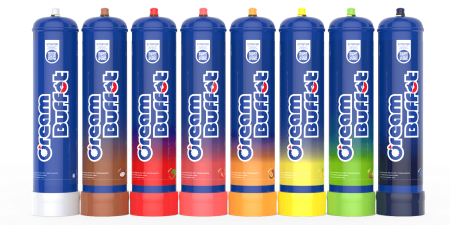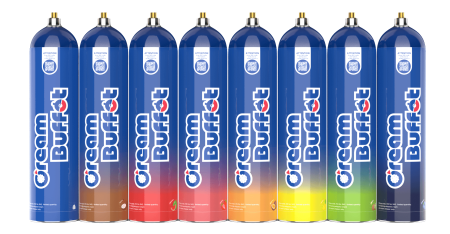Nangs, also known as cream chargers, are tools widely used in the food processing industry, with their core component being nitrous oxide (N₂O). However, the legality and usage regulations of Nangs vary significantly across the world. As misuse has increased, many countries have been tightening regulations on this product. This article will explore the global legal status of Nangs, the risks associated with their misuse, and the trends in regulation to provide industry professionals and consumers with an authoritative reference.
Nangs (cream chargers) are legally regulated worldwide, with significant differences across countries. In many places, they are used in food processing, but increasing abuse has led to stricter regulations. In countries like the UK, Australia, and the US, Nangs are allowed with restrictions, such as age limits and usage declarations, to prevent misuse. The growing trend is towards stricter regulations, including technological tracking and transparency, to ensure their safe use.

1. Global Nicknames and Uses of Nangs
Nangs go by various names across the world. In Australia and New Zealand, they are commonly referred to as “cream chargers.” These chargers are primarily used in food processing for whipping cream, but in other countries, they have different names:
- Europe and the United States: Whippets, Whip-its, Bulbs, Chargers
- Racing Industry: NOS (Nitrous Oxide System)
- Medical Use: Laughing Gas
In addition to their use in food processing, N₂O is widely employed in medical anesthesia, particularly for dental procedures and childbirth pain relief. Furthermore, N₂O is also used in the industrial sector as an engine propellant, especially in racing as an acceleration gas.
2. Comparison of Nangs’ Legality in Different Countries
The legality of Nangs varies by country, with specific regulations and enforcement depending on local government concerns regarding public safety, health impacts, and market demand. Below are the situations in several key regions:
2.1 Europe and the United Kingdom:
In the UK, Nangs are regulated under the Psychoactive Substances Act 2016. The sale of Nangs is legal but prohibited to minors. Sellers are required to register and specify the intended use to prevent misuse. Other countries such as France, Germany, and the Netherlands also permit the sale of Nangs but have strict regulations regarding their transport and storage, with some requiring buyers to provide identification.
2.2 North America:
In the United States, the legality of Nangs is permitted at the federal level, but regulations vary by state. For example, California prohibits sales to individuals under 18 and requires some states to have licensing for purchases. In Canada, Nangs are classified as a “Natural Health Product” (NPN certification), requiring a review of ingredient purity and safety by Health Canada. All sales information must be publicly available on the official website.
2.3 Asia-Pacific Region:
In Japan, Nangs are legally used as food additives but must comply with the Health Promotion Law standards for “specific health foods,” with strict regulation. However, regulation of “nutritional function foods” is looser, leading to market chaos. New Zealand lacks specific legislation, but Nangs must be declared for importation, and customs increase checks on suspected misuse packages.
3. Australia: A Legally Regulated Market with Strict Oversight
In Australia, Nangs are allowed for food processing, but the country has implemented a strict three-tier regulatory system to ensure that Nangs are not misused.
- Import Control: Nangs must declare ingredients, concentrations, and quantities upon importation, with customs strictly inspecting illegal shipments.
- Sales Restrictions: Sales to individuals under 18 are prohibited, with severe fines or imprisonment for violations.
- Usage Review: Sellers must sign agreements to ensure customers use Nangs responsibly. Starting in 2025, suppliers will be required to file supply chain information with regulatory authorities in advance.
Australia’s regulations include highly digitized management, and there are plans to enhance supply chain tracking using technology to counter illegal circulation and misuse. By March 2025, Australia plans to introduce border detection technology to further ensure compliance with Nangs’ components and strengthen actions against illegal trafficking.

4. Health Risks and Legal Consequences of Nangs Misuse
While Nangs provide convenience in food processing and medical fields when used legally, their misuse can lead to serious health risks and legal consequences.
4.1 Short-Term Health Effects:
Misuse of Nangs can cause short-term health symptoms such as dizziness, nausea, and numbness. Severe oxygen deprivation could lead to unconsciousness or asphyxiation, especially when used in enclosed spaces. Additionally, misuse can lead to hallucinatory effects, potentially causing dangerous driving or violent behavior, posing a threat to public safety.
4.2 Long-Term Health Damage:
Long-term misuse of Nangs has significant adverse effects on the nervous system. Nitrous oxide can cause vitamin B12 deficiency, leading to nerve damage and even paralysis. Abusers may also experience cognitive impairments such as memory loss and attention difficulties, with teenagers being particularly vulnerable.
4.3 Legal Consequences:
Misuse of Nangs not only poses health risks but also carries legal consequences. In China, illegal operations involving Nangs can be charged with “illegal business operations,” with a maximum sentence of 15 years in prison. In some U.S. states, individuals who misuse Nangs may be forced into drug rehabilitation.
5. Global Regulatory Trends and Industry Recommendations
As Nangs’ misuse becomes more severe, global regulatory trends are shifting toward stricter enforcement, particularly in the following areas:
Trend 1: Strengthened Age Restrictions and Usage Declarations
Canada requires all Nangs sellers to publish NPN certification details on their websites to ensure consumers understand their purpose and safety. Such transparency measures are increasingly adopted worldwide.
Trend 2: Technological Empowerment in Regulation
For example, Australia has begun using IT systems to track the supply chain and plans to introduce advanced border detection technology to ensure compliance. This technology-driven regulatory approach is expected to become the mainstream method of enforcement.
Industry Recommendations
For businesses, it is crucial to establish a customer usage review mechanism and maintain comprehensive transaction records to ensure Nangs are not misused and avoid legal risks.
For consumers, it is recommended to purchase Nangs through legitimate channels and avoid using modified equipment to inhale N₂O. Misuse of Nangs not only harms health but may also involve legal risks.
6. Conclusion
As a legal food processing tool, the legality and use of Nangs are closely tied to regulations. While Nangs are allowed in many countries and regions for food and medical purposes, regulations are becoming stricter due to the potential public health problems caused by misuse. As a producer of cream chargers, Cream Buffet strives to balance market demand with risk prevention, ensuring that Nangs do not become a health threat through misuse.